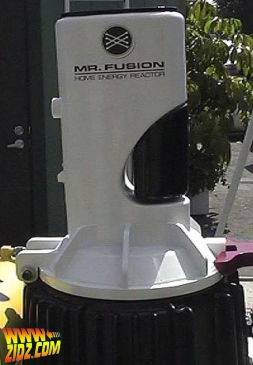ionbeam
2 FUN
I'm splitting this off from another dead stator thread in the Technical/Mechanical Problems area that was becoming divergent from the opening issue.
In that thread there was mention of Rick's Mototrsport Electrics with a couple of people that gave them a good reference. There was a bit of confusion if they had offerings for our FJRs, and since they are ~3 miles from my house I said I would stop in sometime. Today was that time.
Rick's is in a fairly new industrial complex, I would guess that Rick's is roughly 10-14k sq/ft and neatly kept. Master Rick will be out of town until next week so I didn't get a chance to speak with him today. I was asked to come back in a couple of weeks, after Rick recovers from having been out of the office for an extended length of time. Rick's does their own stator design work and their own winding. They do starter rebuilding completely on site. They say that they have worked with a Taiwanese firm to develop their Rectifier/Regulators. I have some thoughts about that, I'll hold them until after I talk with Rick.
I spoke withdazzling, deep blue eyed Amanda at first, then others that got drawn in. Even though there is a catalog listing for a FJR stator they have never offered one or rebuilt one. When I mentioned that there was a cross reference between a R1 stator and a FJR stator they couldn't verify that. There was definite interest in both stock and HO stators for the FJR. We discussed the power outputs of the Gen I and Gen II alternators (generators) and some design goals. When I go back, one of the things we will start with is assessing what, if anything can be done to reliably increase wattage in the given space. -- Is there anyone with an engine apart that could assist in making space measurements in the stator area? -- The stator diameter is fixed but the stator can grow in thickness (width) at least a small amount. If it looks like Rick's has an opportunity to make a RELIABLE HO stator we will proceed with the study.
I mentioned that my aftermarket HO stator failed, and others are starting to fail too. Amanda asked how many miles I had on my stator and I replied 36k miles. There was a twittering around the room with snickering and chuckling like comes with an inside joke. Finally they broke the news to me that my mileage was actually pretty good for a stator that made ~100 watts over stock output :blink: After a quick inspection of my bike and a discussion about what others are running on their bikes one gentleman suggested towing a small trailer with a light-water nuclear reactor. Another offered that they have seen a supplemental alternator kit that bolts onto some Ducatis in addition to the OEM stator.
Thinking of our good pal Skoot I asked about starter rebuilds. They do the whole job on site, including winding and bearings. The typical cost is $165 to $175. I told them about the motor shaft seal letting oil into the starter and making a real mess. Well, let me tell ya, Skoot's starter looks pretty good compared to some of the starters they get.
I'll be going back to see Rick and will update this with any news. Anyone have any specific questions they would like to have me ask?
In that thread there was mention of Rick's Mototrsport Electrics with a couple of people that gave them a good reference. There was a bit of confusion if they had offerings for our FJRs, and since they are ~3 miles from my house I said I would stop in sometime. Today was that time.
Rick's is in a fairly new industrial complex, I would guess that Rick's is roughly 10-14k sq/ft and neatly kept. Master Rick will be out of town until next week so I didn't get a chance to speak with him today. I was asked to come back in a couple of weeks, after Rick recovers from having been out of the office for an extended length of time. Rick's does their own stator design work and their own winding. They do starter rebuilding completely on site. They say that they have worked with a Taiwanese firm to develop their Rectifier/Regulators. I have some thoughts about that, I'll hold them until after I talk with Rick.
I spoke with
I mentioned that my aftermarket HO stator failed, and others are starting to fail too. Amanda asked how many miles I had on my stator and I replied 36k miles. There was a twittering around the room with snickering and chuckling like comes with an inside joke. Finally they broke the news to me that my mileage was actually pretty good for a stator that made ~100 watts over stock output :blink: After a quick inspection of my bike and a discussion about what others are running on their bikes one gentleman suggested towing a small trailer with a light-water nuclear reactor. Another offered that they have seen a supplemental alternator kit that bolts onto some Ducatis in addition to the OEM stator.
Thinking of our good pal Skoot I asked about starter rebuilds. They do the whole job on site, including winding and bearings. The typical cost is $165 to $175. I told them about the motor shaft seal letting oil into the starter and making a real mess. Well, let me tell ya, Skoot's starter looks pretty good compared to some of the starters they get.
I'll be going back to see Rick and will update this with any news. Anyone have any specific questions they would like to have me ask?
Last edited by a moderator:






























































